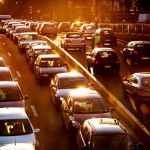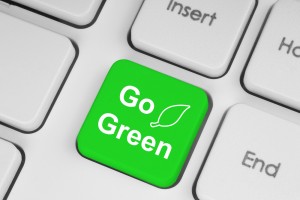Environmental labels have proliferated in the past decades [1]. As demand for more sustainable products has grown, so have the initiatives to label them. So much so that there are now over 500 such labels in use worldwide. That doesn’t make it easy for consumers, who often feel lost when having to choose the ‘green’ option.
The EU Ecolabel was set up in 1992. It was designed to help and guide consumers in an often fragmented market of 500 million people towards greener and healthier choices.
The label is taking off, but it can do better!
The EU Ecolabel is a Europe-wide voluntary label for products that tend to be within the top 10-20% of the most environmentally performing products. Manufacturers can use the label only after a national authority has verified that the product fulfils the scheme criteria [2].
Although the label’s start was slow, it is now found on almost 45,000 products and services in the EU market. There were 1,500 new products who used it last year. The label is taking off, but it can do better!
Are public authorities doing enough to bring the EU Ecolabel closer to European citizens?
The label has been relatively successful for products such as detergents, tissue paper, copy, paints or even hotels. But it is not easy to find in shops that sell goods that are bought often, such as diapers or clothes. We really need more EU Ecolabelled products on shop shelves!
Ecolabel, what?
Only 36% of Europeans are able to correctly identify the EU Ecolabel logo. Consumers’ awareness of it is rather limited if compared with other national ecolabels, such as the Nordic Swan or the German Blue Angel.
The problem for the EU Ecolabel is a classic chicken-and-egg story.

Nordic Swan label in a Swedish metro station. The public awareness campaign ran in 34 cities, including all subways and bus stops in Sweden.
Consumer awareness of the eco-label is still limited, meaning there is too little demand for this type of product, which in turn puts off manufacturers from applying to get their products eco-labelled. But because of that, consumers are unlikely to get used to seeing the label on products.
So the question is: are public authorities doing enough to bring the EU Ecolabel closer to European citizens?
The other day I saw fantastic pictures of the Nordic Swan at several metro stations in Sweden [3]. It made me think that I have never come across the EU Ecolabel on my way to the office. What a pity!
The Commission is currently assessing how to improve the scheme [4]. There is a simple thing decision makers should do: promote it!
The environmental excellence of the EU Ecolabel is its bestselling argument.
The 25th anniversary of the EU Ecolabel in 2017 is a fantastic time to promote it. Marketing activities should be scaled up and there should be a way for the EU Commission, Member States, businesses, consumer organisations and environmental NGOs to cooperate regularly in this promotion. Any marketing strategy needs to be based on clear messages on how the label protects the environment and people’s health.
The environmental excellence of the EU Ecolabel is its bestselling argument. Consumers are more and more looking for greener products [5]. All they need is a simple logo they can trust and recognise wherever they go in the European Union.
—————————————————
[1] The OECD lists 72 labels in 1990 and 574 in 2012 in their non-exhaustive inventory about ecolabels in the world.
[2] The European Commission and the EU Ecolabelling Board (gathering Member States and interested groups such as industry, retailers, consumer organisations, represented by BEUC and environmental NGOs) are responsible for adding new types of products and services and developing criteria. They are selected from a life-cycle perspective. For example products that last longer, that are easier to repair or recycle, that optimise the use of resources and reduce the use of hazardous chemicals are more likely to be selected. The EU Ecolabel ‘multicriteria’ approach makes green choices easier, in contrast to labels that focus only on one aspect, such as carbon footprint or energy use. More information is available on the EU Ecolabel official website.
[3] As part of the five years campaign ‘Save the world a little bit, every day‘ that was first launched in Sweden for the celebration of the 25th anniversary of the Nordic Swan in 2014.
[4] As part of its Regulatory Fitness and Performance Programme which aims to assess the effectiveness, efficiency, coherence, relevance and EU added value of specific parts of the EU acquis.
[5] Across the EU, a very high proportion of citizens buy environmentally-friendly products (80%). 26% of people say they often buy environmentally-friendly products and 54% say they sometimes do. Attitudes of Europeans towards building the single market for green products. Flash Eurobarometer 367, July 2013


